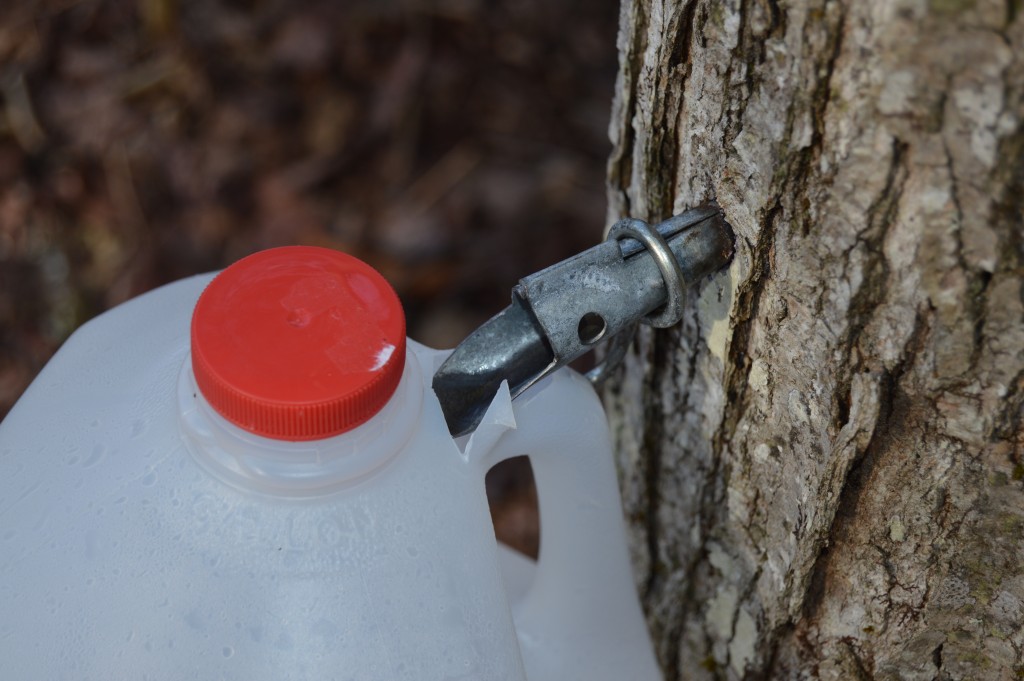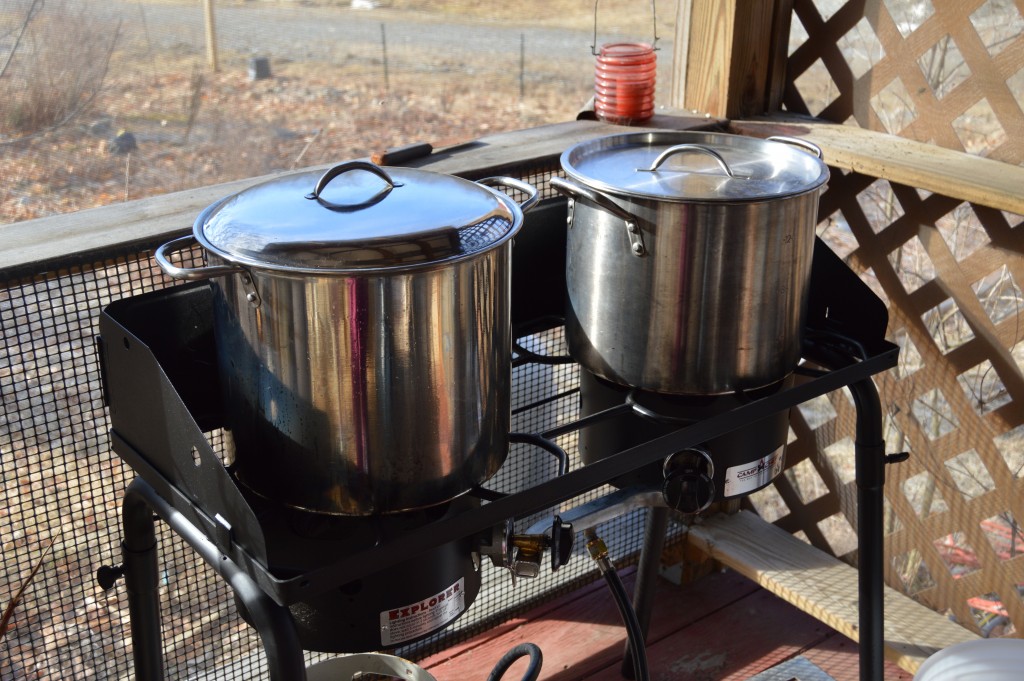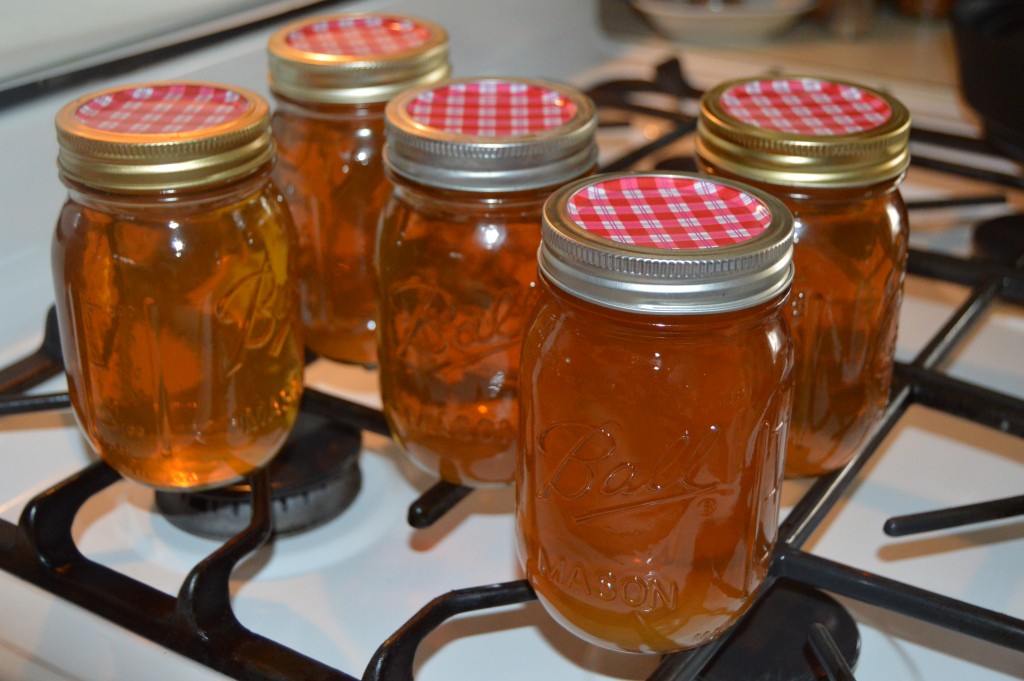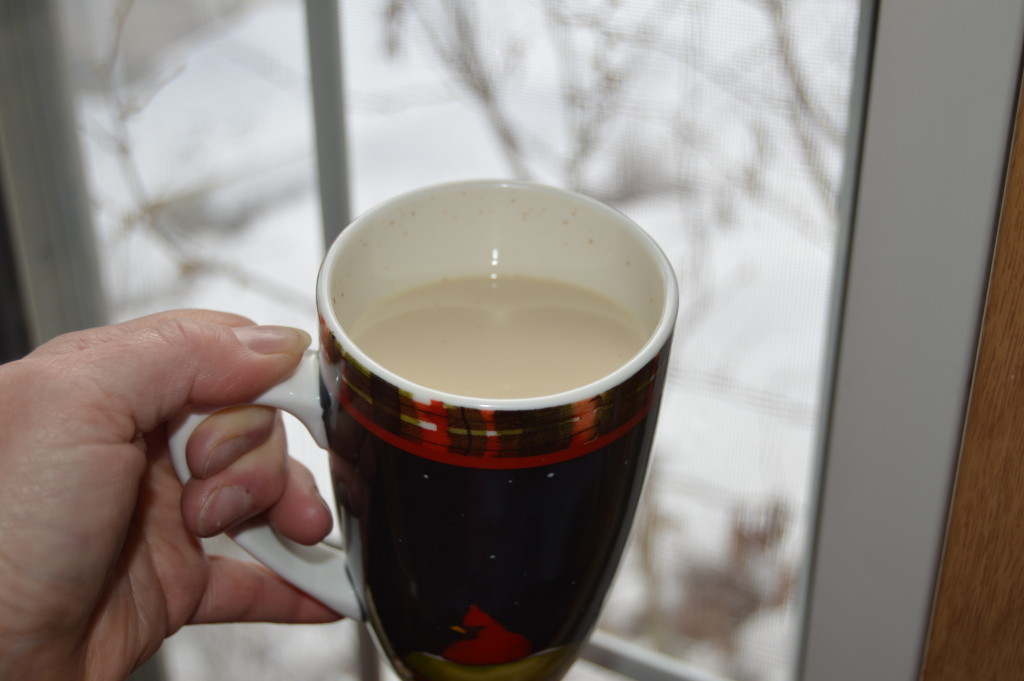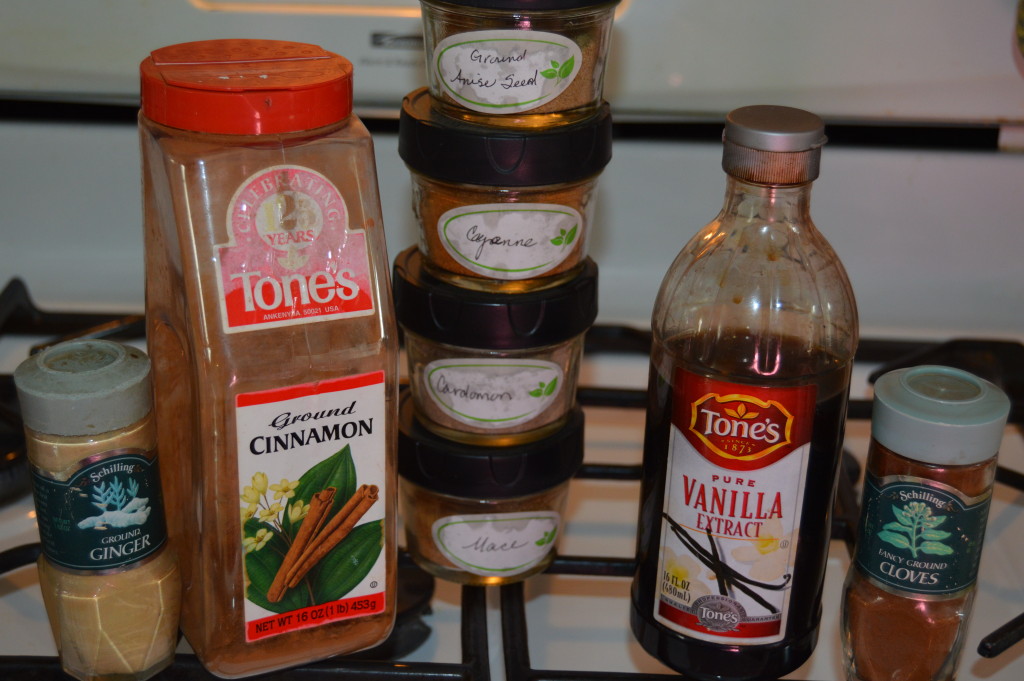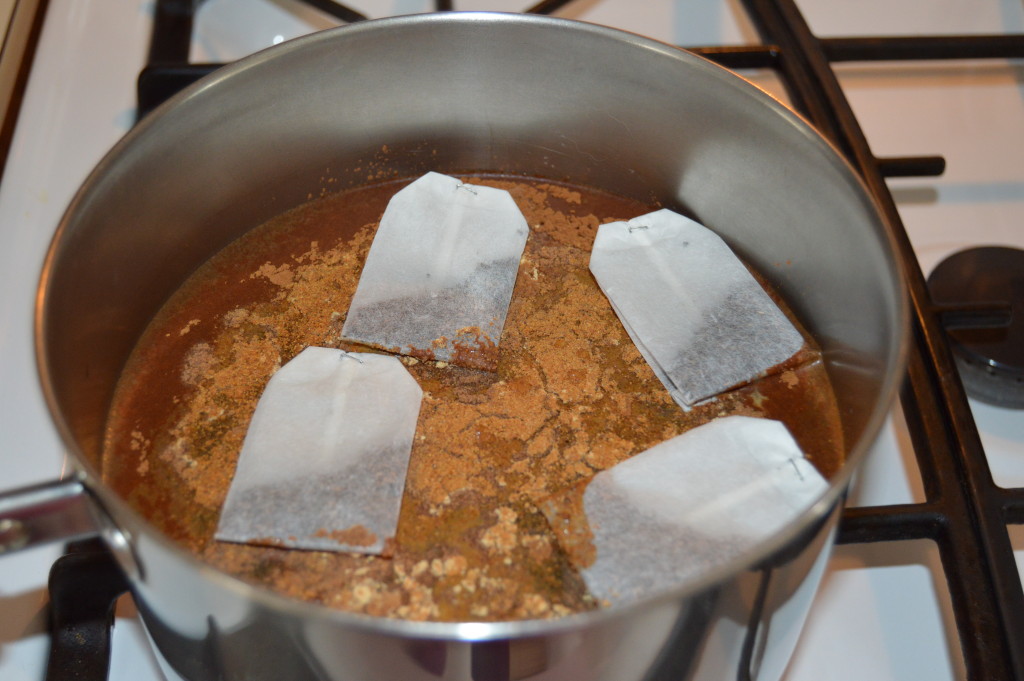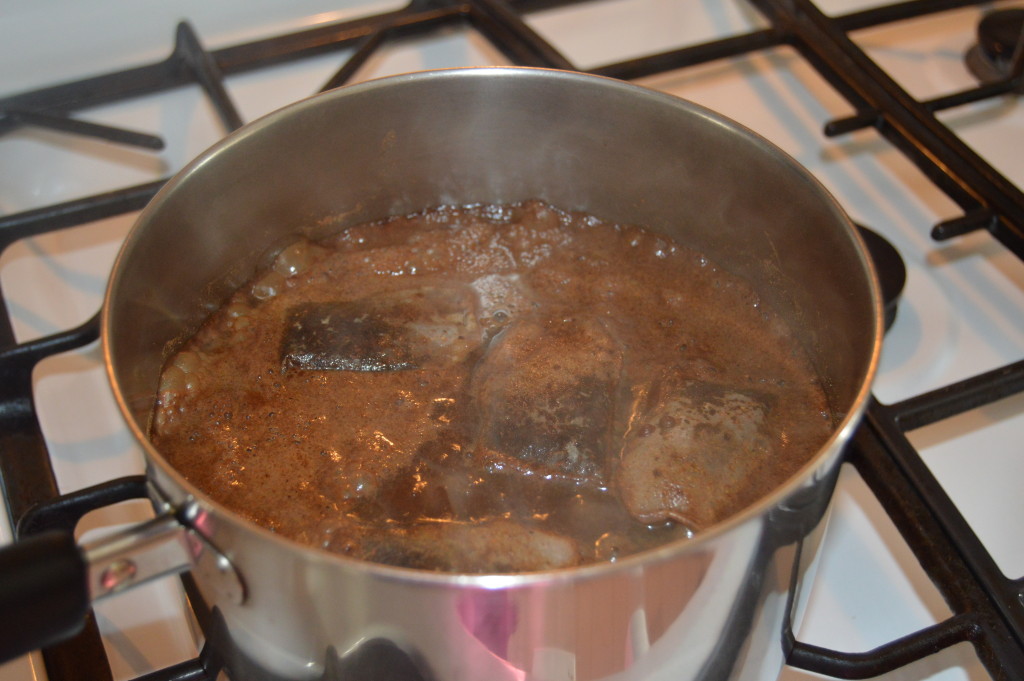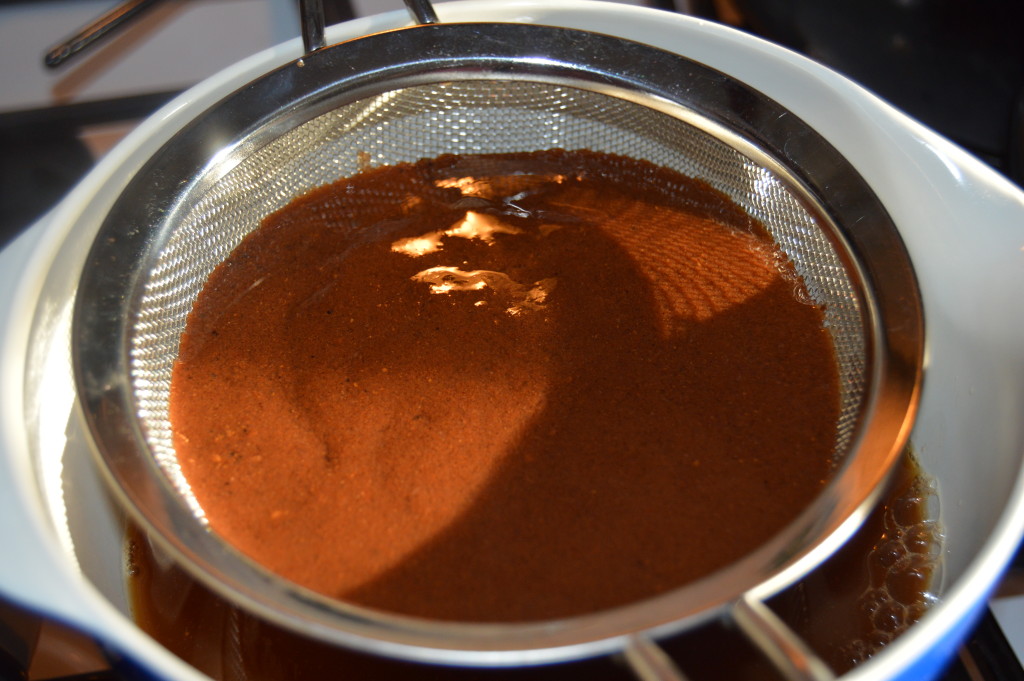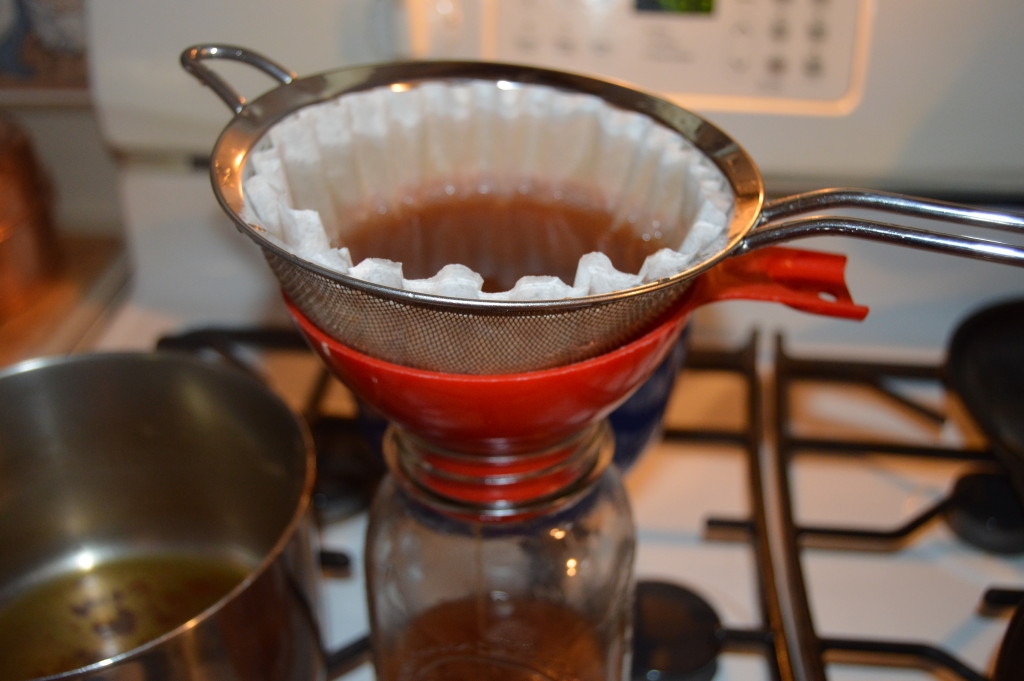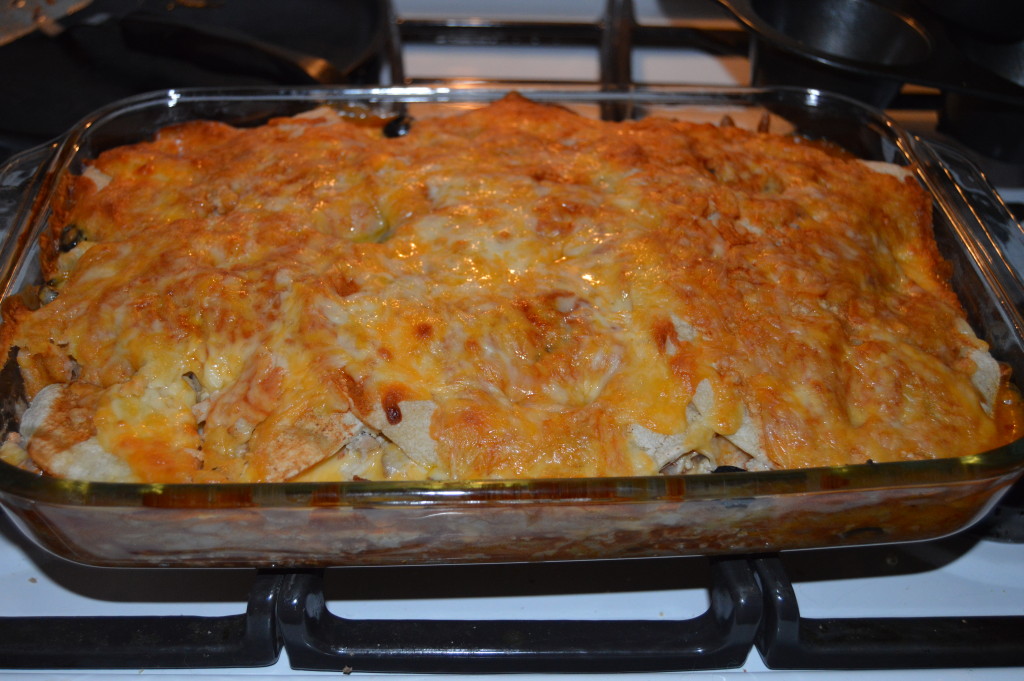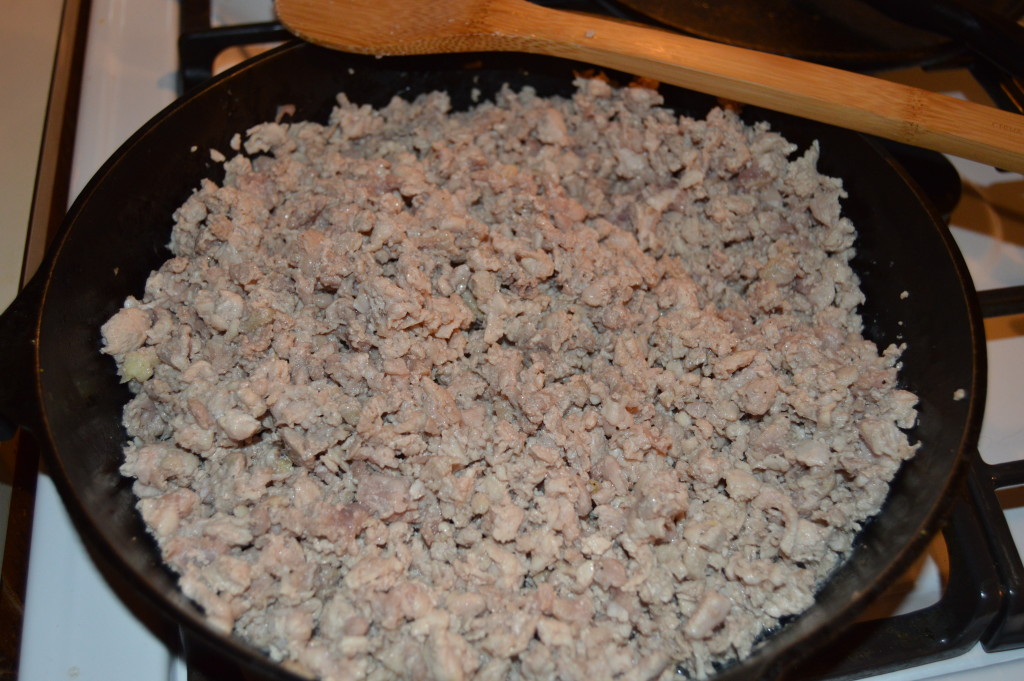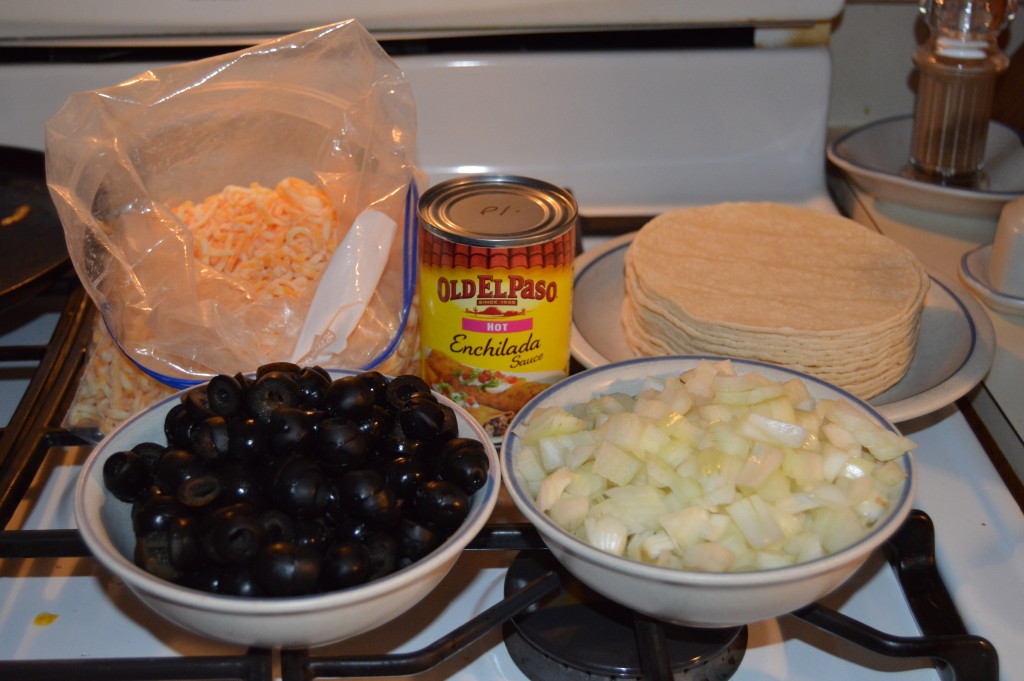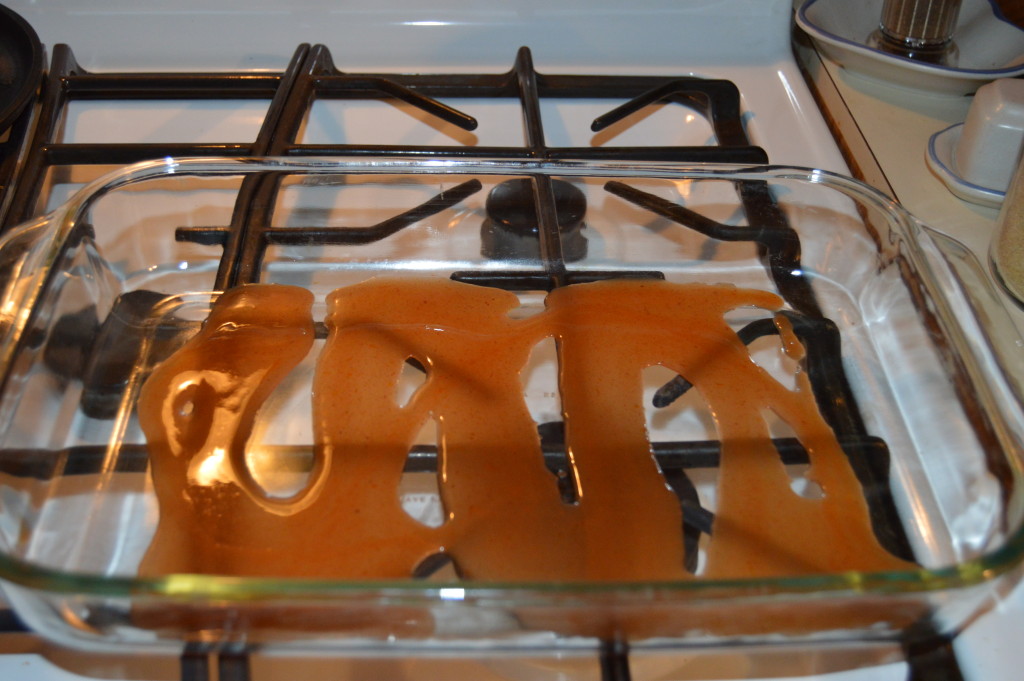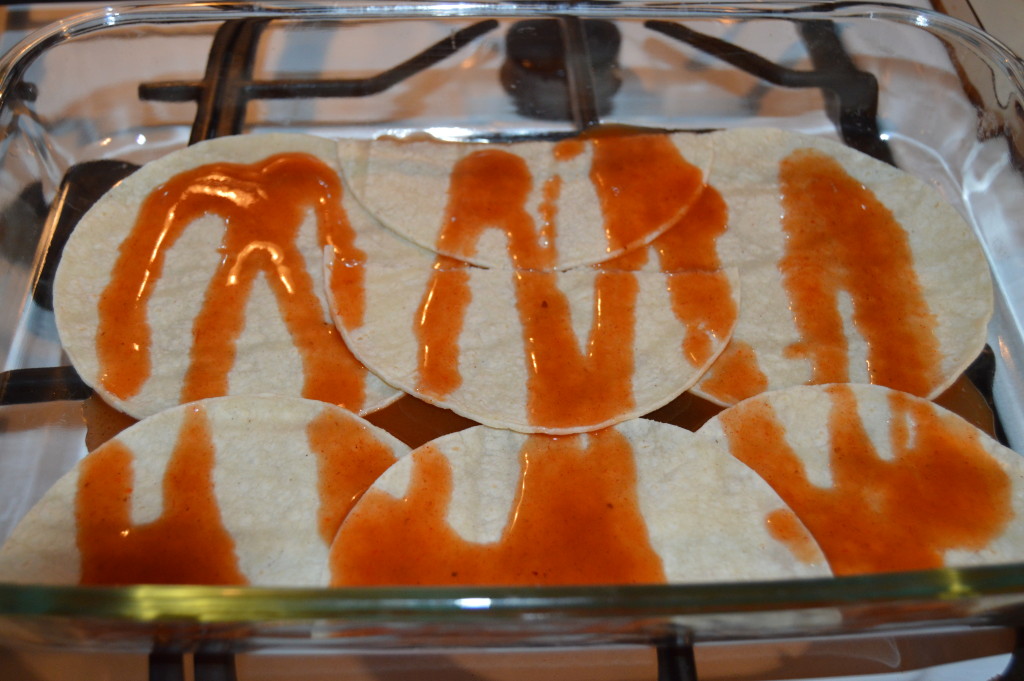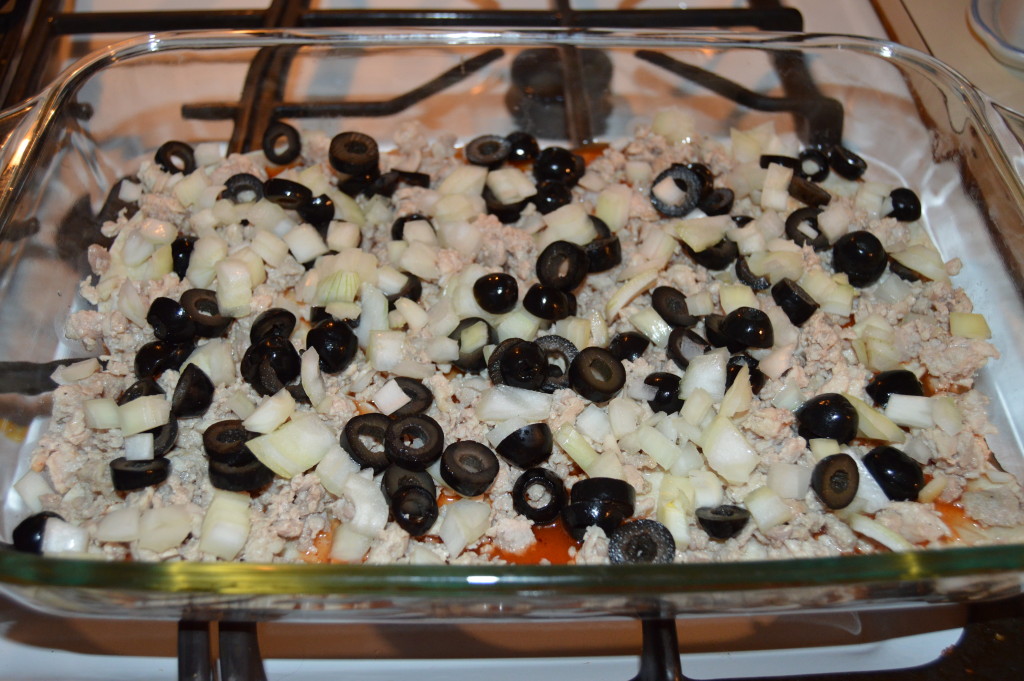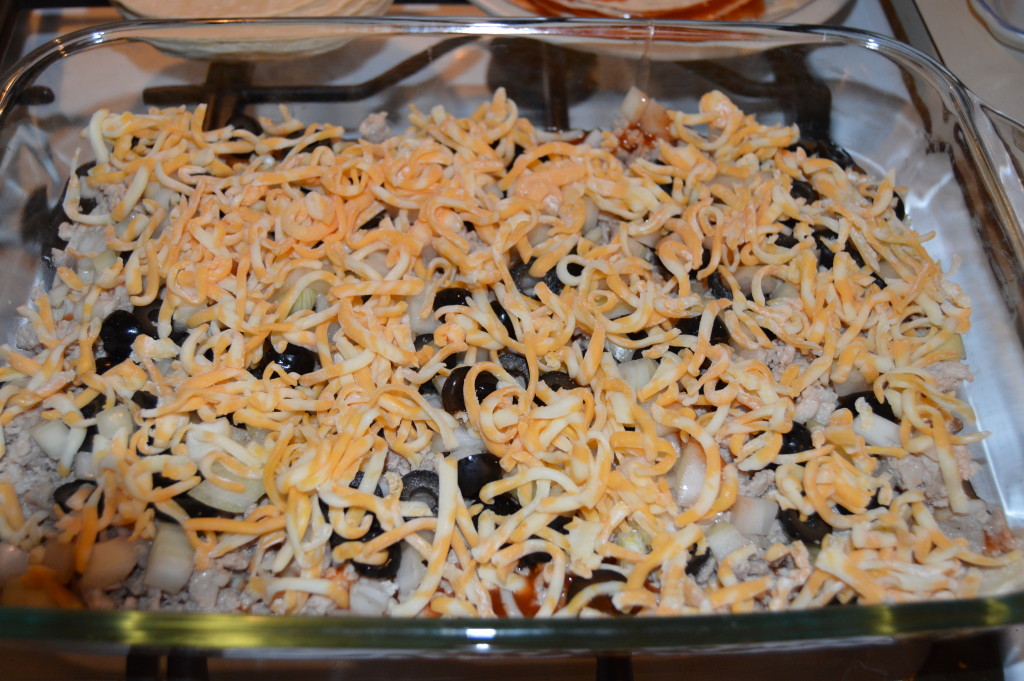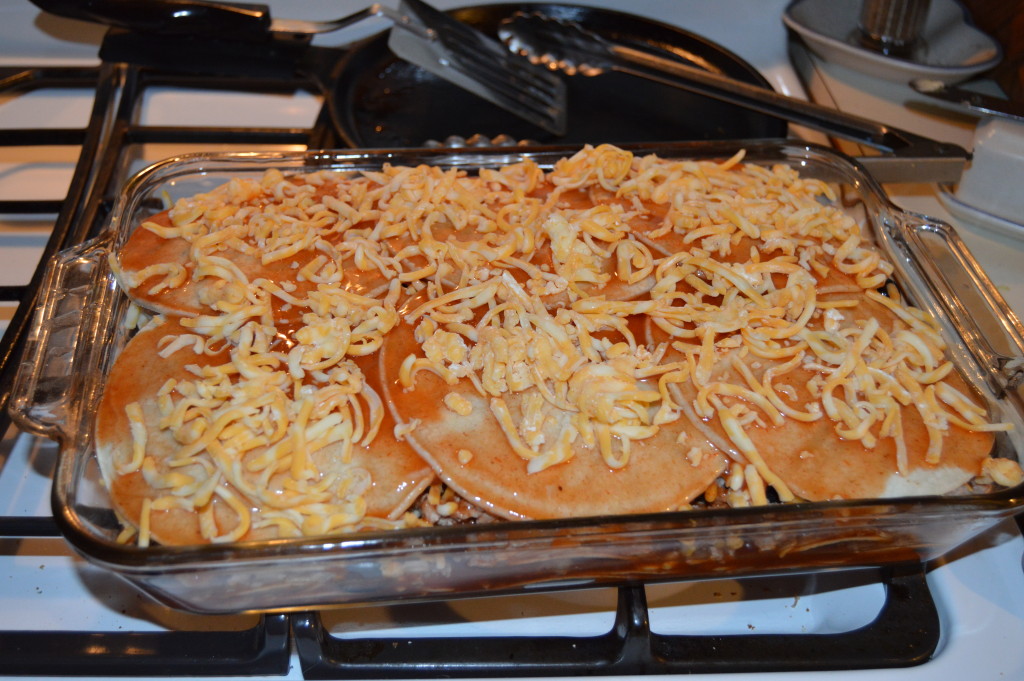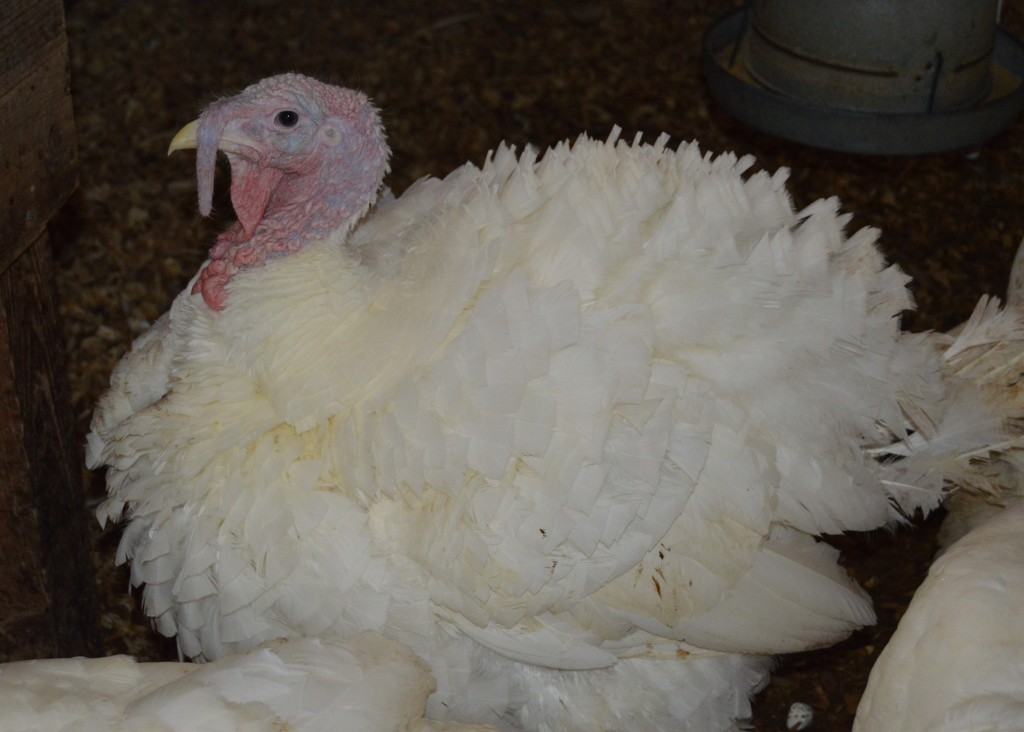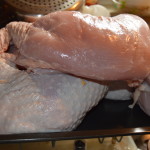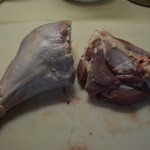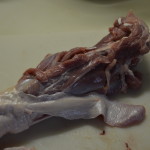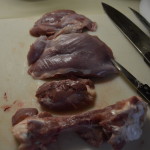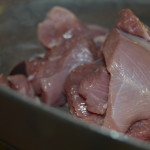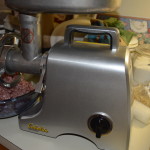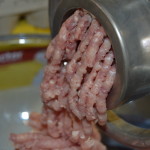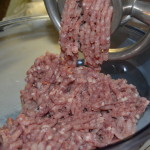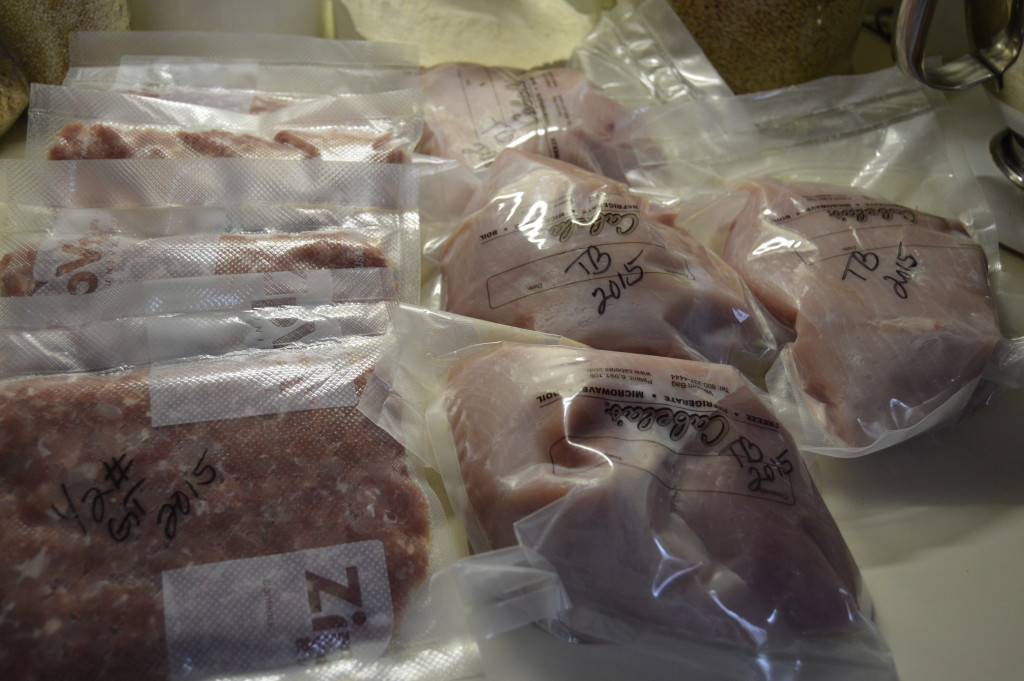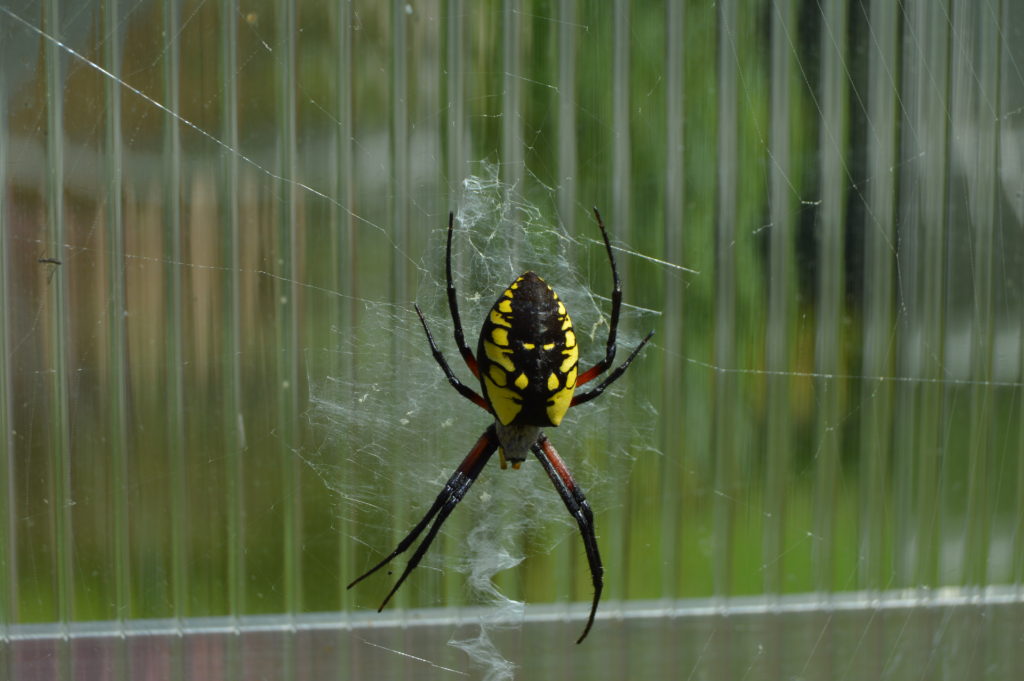
Okay, so I'm not a real fan of spiders but since it is the month of Halloween I thought I'd show you a picture of one that made itself at home on the outside of my greenhouse late August and into September. It actually produced two egg sacks.
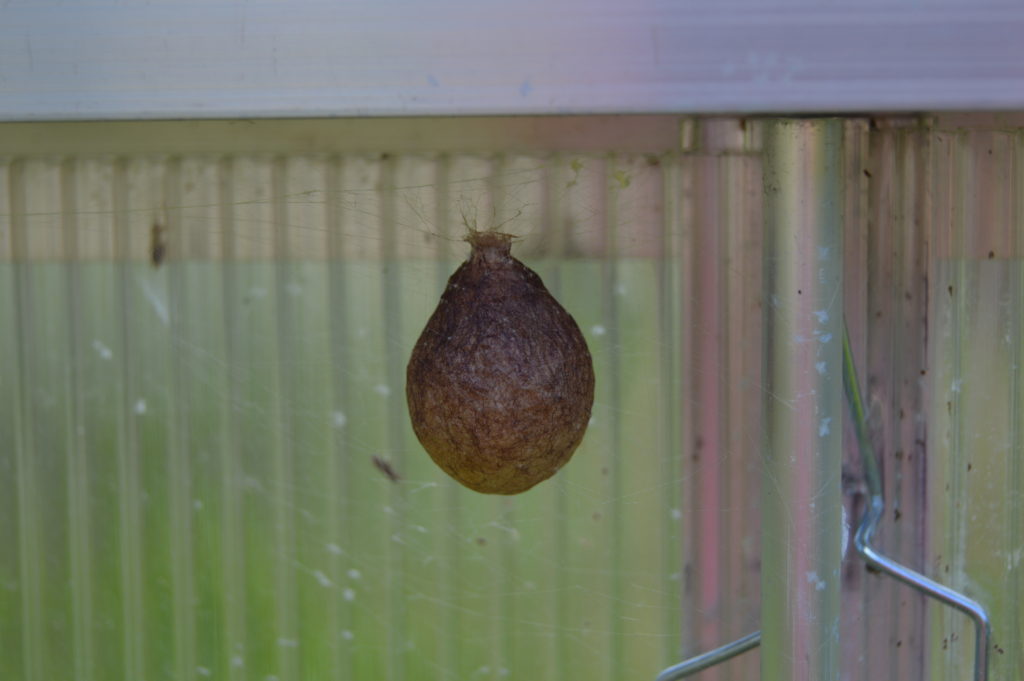
I looked up what type of spider it was because to tell you the truth, it was pretty big and as I said before I don't really like spiders. I didn't do much research other than to learn that they are fairly common here in Maine and hopefully she was eating a lot of mosquitoes. It is so magnificent though how God put the big "face" on the back of the spider to scare away predators.
I know it has been a long time since I have added a post. I apologize. Since it has been a couple of months I thought we could revisit some of the plants from the last post just to see the progression of the growing season with the perennials and some other plants around the homestead.
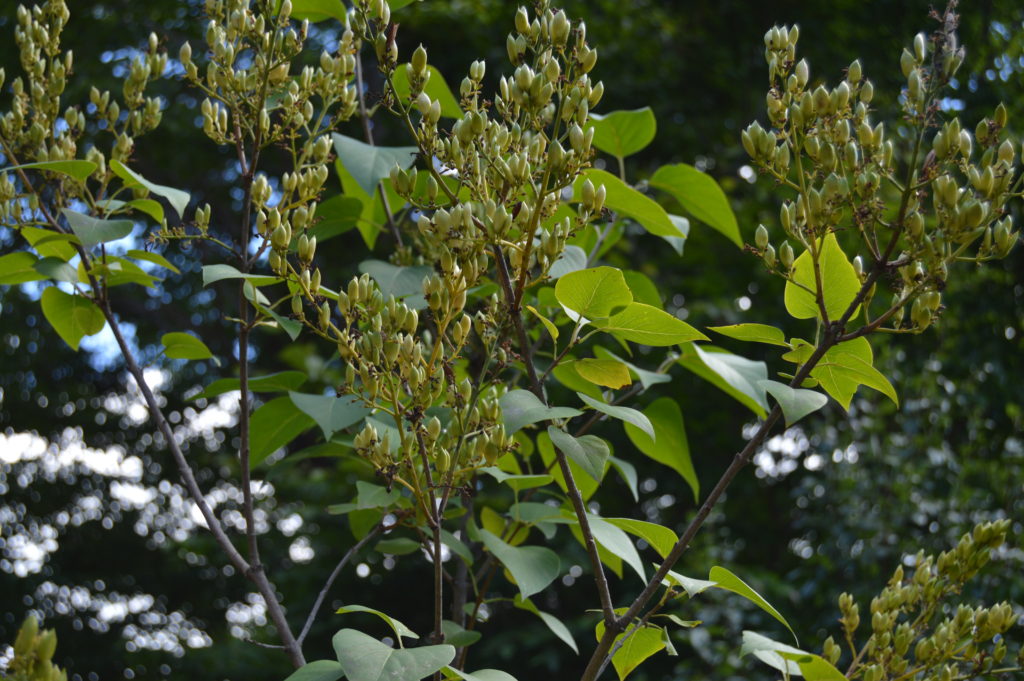
Here is our lilac plant, as you can see it has gone to seed. I think it is pretty in it's own right at this stage. There is just not the heavy perfume in the air as with this plant in the spring. Even though there is no food produced for us from this plant it is one of the first to bloom in the spring and therefore it provided food for our bees as well as the butterflies and other insects. I actually couldn't imagine a homestead without this very old and traditional plant if you can grow it in your area. If you ever visit a old homestead site you might find just the remains of the foundation of the house but you will find the lilac and asparagus patch still growing, amazing.
The raspberries were all picked, although it wasn't a very big crop, we had enough to eat fresh. I really need to move the bushes to a sunnier spot but I haven't figured out where that will be just yet.
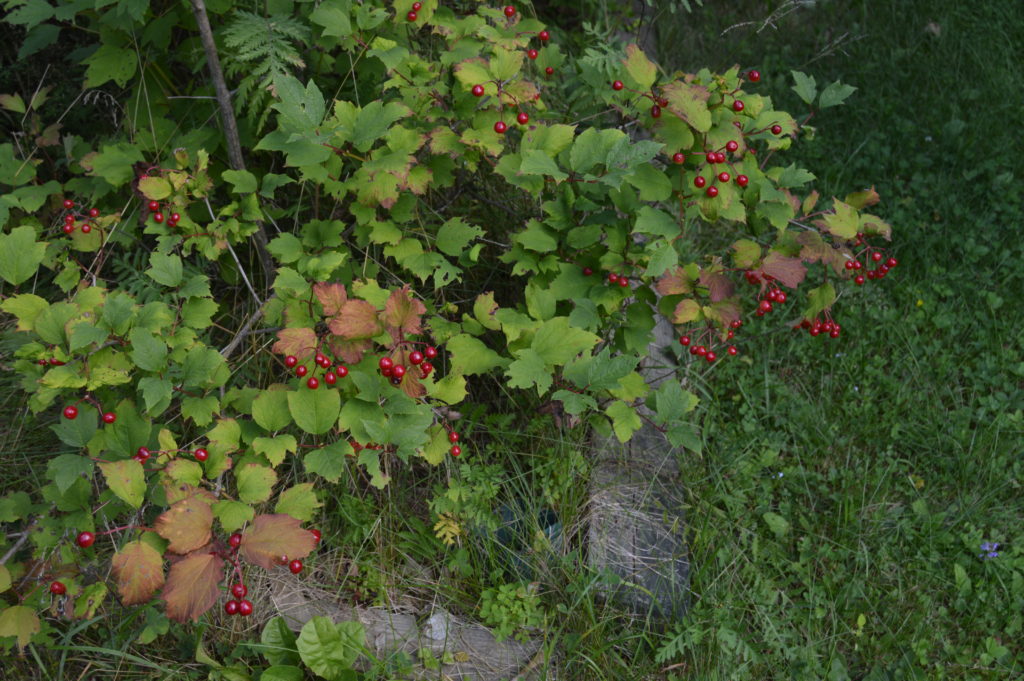
The highbush cranberries have all matured. I waited until after the first frost to pick them. They are in my refrigerator now as I try to figure out what to do with them. Highbush are not exactly the same as the lowbush variety that are grown in bogs and we see made into commercial cranberry sauce. Although I think that is what I am going to do with my harvest. I'm going to look for recipes and see what might be fun to make for Thanksgiving.
We got a really great harvest from our grape vine in the front yard. Since I didn't have time to process the grapes we picked them by the cluster and put the clusters directly into freezer bags. Later this fall or during the winter when I have less outside things that need to be done I will extract the juice and make grape jelly with it. This is the first real harvest that we have taken from the grapes. Since we fenced in the front yard the chickens do not get to eat all of them. I'm looking forward to fresh baked bread toasted with grape jelly this winter. Yum!!!
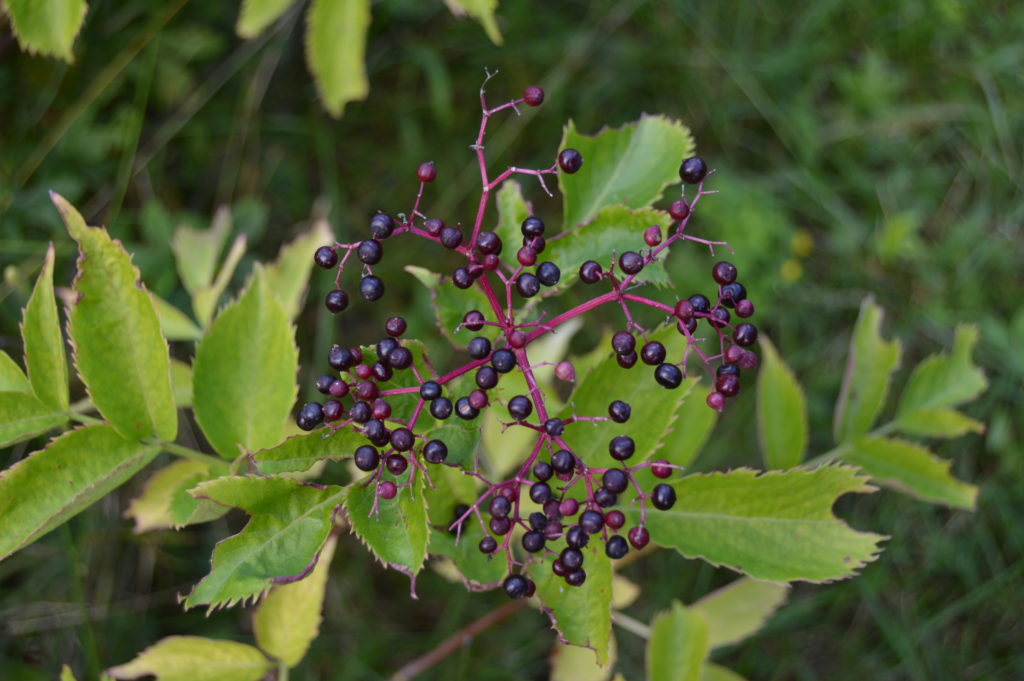
The elderberry are such a beautiful color when ripe. There were only a few clusters on the plant this year and I really didn't know when to harvest and before I got to it the berries matured and fell to the ground. Then I discovered on the side of our driveway a huge wild elderberry plant. It's funny but the plant has been there for years and I didn't know what it was until I compared it with the one planted in the yard. I had read that wild elderberry grew in our area but I hadn't paid too much attention to the plant other than the fact that it had pretty white flowers on it in the spring. I don't think I even noticed the berries in the fall. So even though we had berries I didn't get any harvested this year. My plan for next year is to dry the berries and have them on hand to make a syrup for general health and to ward off the nasties that can come about during the winter. I'll let you know more when I do that.
We had a wonderful harvest of our blueberries again this year. We picked every few days for a couple of weeks to pick as they ripened. I put them in the freezer to use as needed for various baking projects. I like to spread them out on cookie sheets and freeze them before putting them into the freezer bags. This keeps them from sticking to each other which allows me to take out just the amount that I need for my recipe.
The strawberries, on the other hand, were terrible this year. It was mostly because I didn't get time to weed them and the weeds won. This is one part of the perennial front yard that I am going to have to revamp. Since I really don't have time to weed a bunch of planting beds I'm going to have to figure out how to keep the strawberries from getting invaded. The best way for this is mulching. I have though about using a weed block product but because of the shape of the beds that I build that would be difficult. I think I am going to reshape the beds to make them more rectangular rather that the curved beds they are now. I also need to revisit the border for the beds. Right now they are bordered with stone which is abundant on the homestead. The problem with stone is that weeds can grow up between them and they are hard to control. I need something more definitive and straight that I can use a week wacker or mower on the outside of to control those weeds. I think I will just go with typical raised planting beds using wood. Just one of the lessons learned.
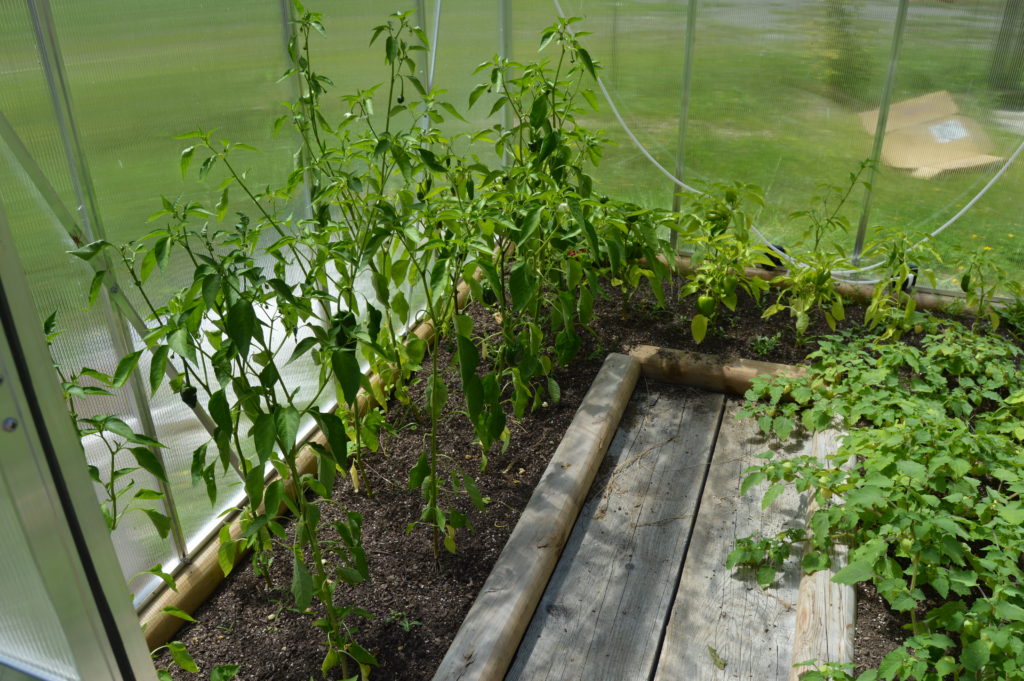
So, my pepper plants love the greenhouse. I have never been able to get peppers to mature for me outside. I know many gardeners here in Maine do but I never could. this year my plants have gotten 2-3 feet high and I have a lot of peppers. They are actually still growing since I am closing the door at night. We have gotten a couple of very light frosts but the greenhouse is enough to protect the peppers from that. I am going to harvest soon. Now that I have a good harvest, what to do with the peppers? Some of the hot peppers will get canned to use on nachos and in my Mexican and Southwest cooking. The sweet peppers I am going to dehydrate so I can throw some into soups and stews during the winter. Finally the Anaheim peppers will get roasted before they get canned. If you have ever bought the little can of green chilies in the store that is what they are, roasted canned Anaheim peppers. It is going to be so fun to have all these to use this year.
Here are some of the other things that have happened since we last talked. Our new batch of laying hens have begun to lay very cute little eggs.
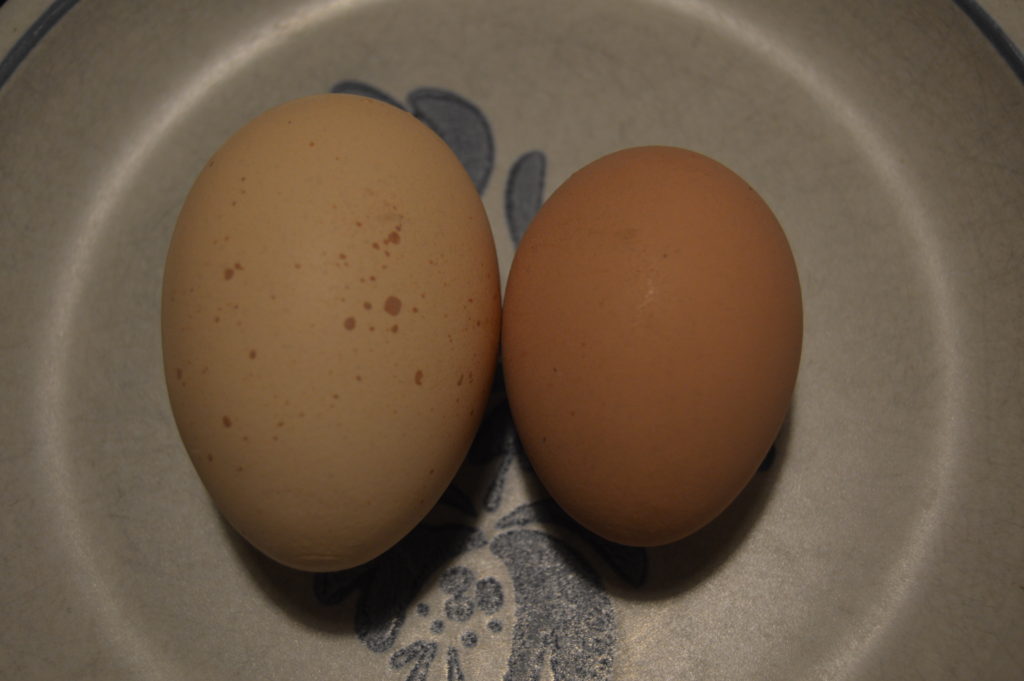
They are small at first and over the next couple of months they will get up to regular size.
Our turkeys are growing well. We have put them out on grass for the first time this year. It seems to be working out great. They love to eat the green grass and seeds that they find and I know it has cut down on the amount of feed thet we are buying for them. We will be moving them into the barn soon though because the house that we are putting them in at night is getting to small for them now that they are getting so big.
Our beautiful German Shepherd Zoe had to have surgery. She tore a ligament in her back leg and it had to be replaced. Absolutely amazing that they can do that. Our vet, Dr Nesin is wonderful and he took such good care of her. She is doing very well and will have her stitches out next week.
Well, I better get to my chores, need to do dishes, hang out some laundry and muck out the turkey house.
Blessings,
Merrie

